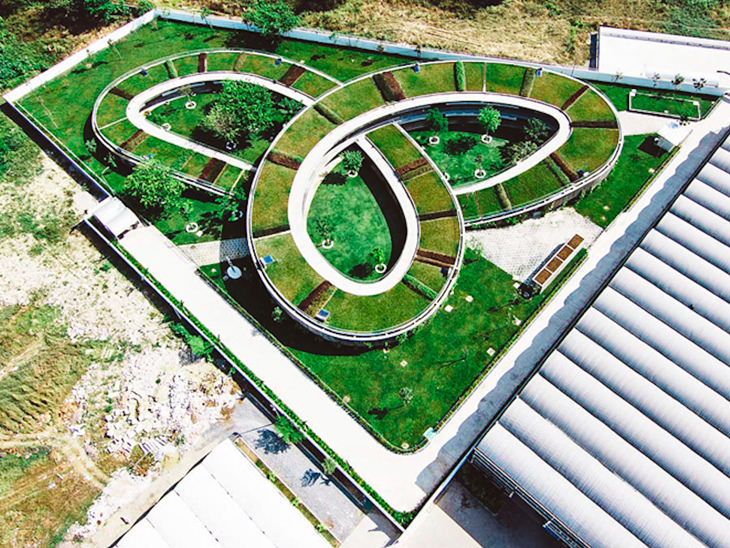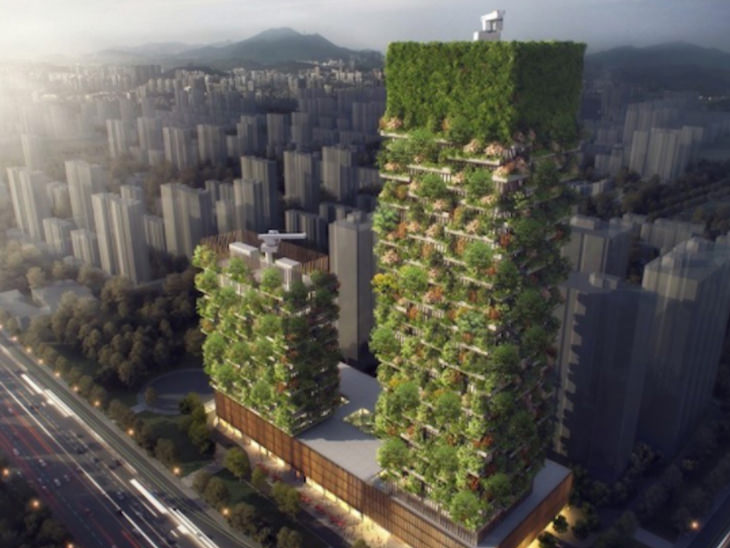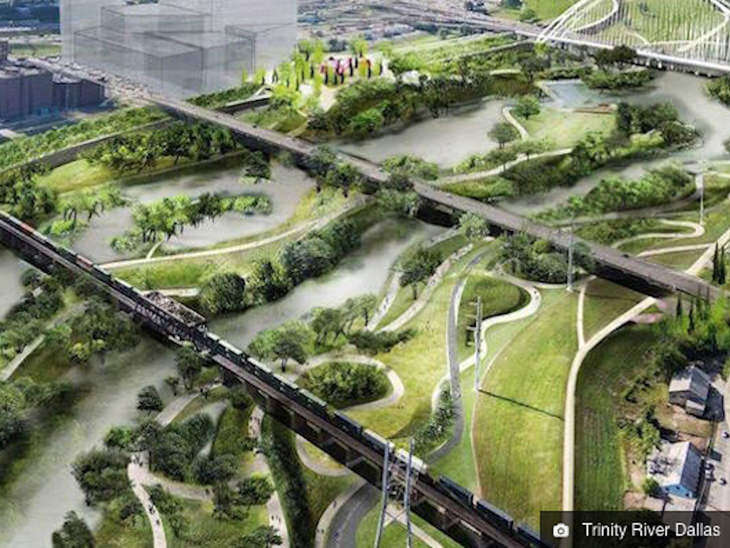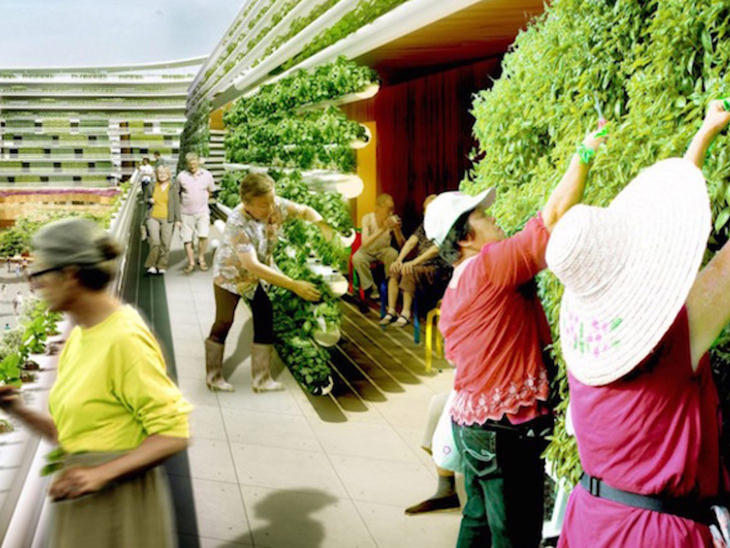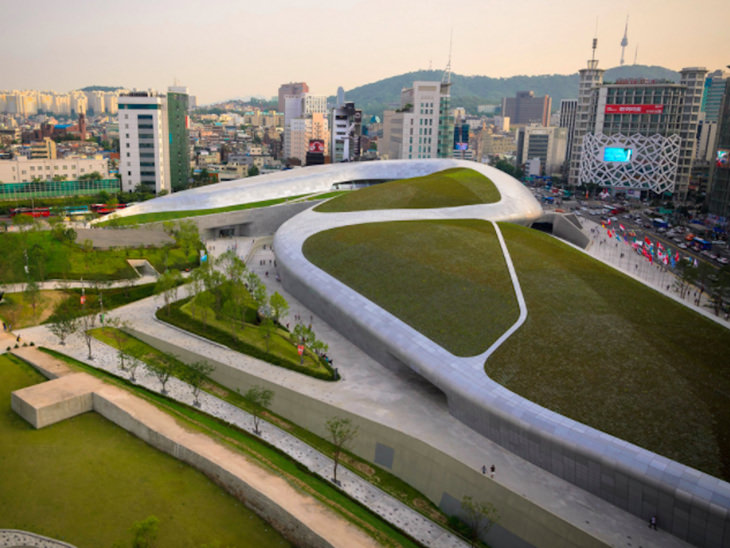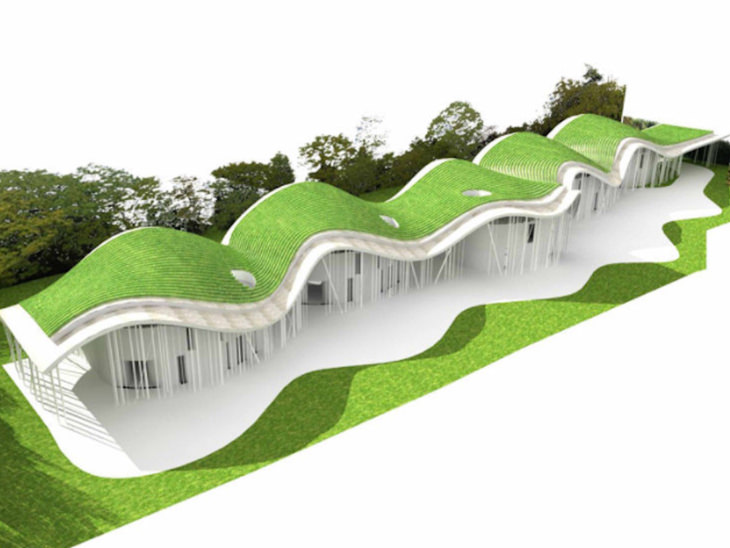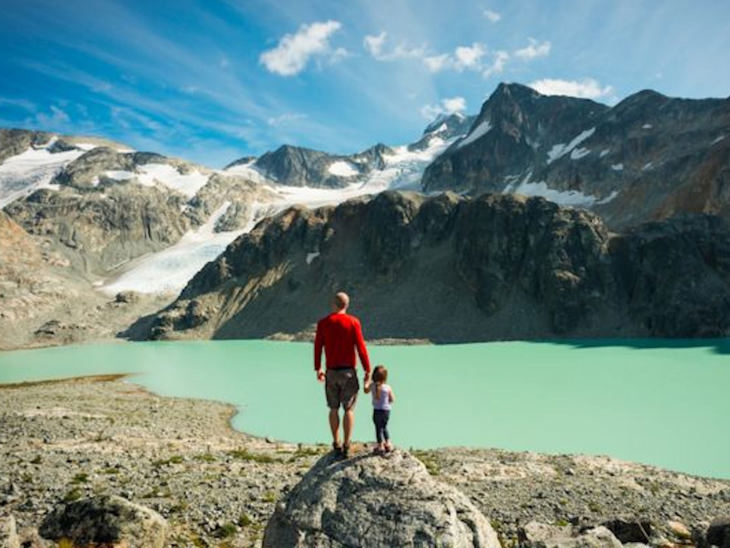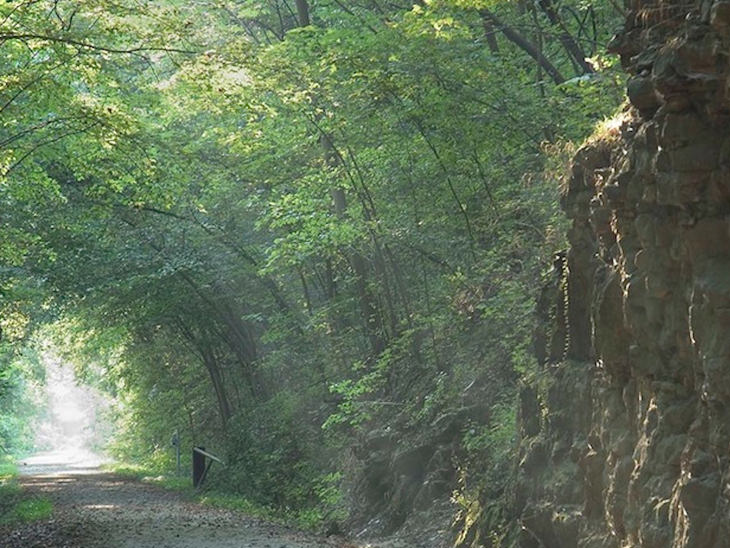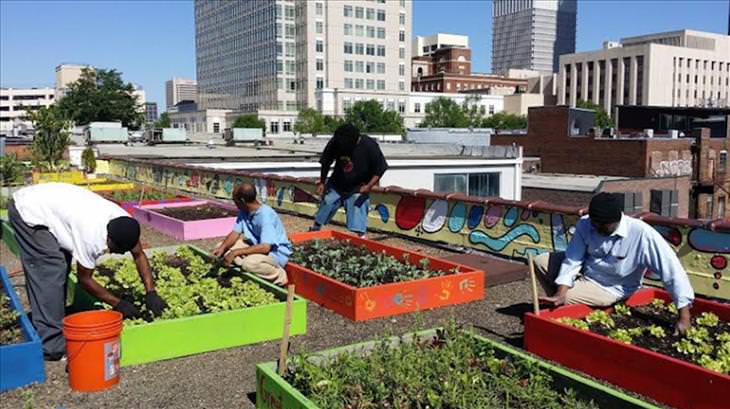1. Farming Kindergarten, Dongnai, Vietnam
This green kindergarten actually covers the top of a building in Dongnai. It was designed by architect Vo Trong Nghai to sit atop the roof of his firm. Features include a vegetable garden to teach students how to grow their own food, while the vegetation also helps to insulate the building. Water heating at the farming kindergarten comes from solar energy, and the grassy areas are watered using recycled wastewater from a nearby factory.
2. Nanjing Towers, China
Set to be completed in 2018, the Nanjing Towers are actually vertical forests that were designed by Italian architect Stefano Boeri. The towers will absorb some 25 tons of carbon dioxide emissions annually, and in turn replenish the city with oxygen. The interiors of the towers will be used as commercial spaces, for offices, restaurants, and shops.
3. The World’s Biggest Urban Nature Park, Dallas, Texas
This park will be 10 times the size of New York’s Central Park when it’s completed. In addition to providing a stunning green space for the residents of Dallas, the park will also help to alleviate flooding that the city occasionally experiences from the rising Trinity River. Furthermore, it’s also intended to restore ecological function to the area.
4. Enabling Village, Singapore
Singaporeans are known throughout the world for being innovative, and this project is no exception. The Enabling Village was born out of the crumbling remains of a building that was left abandoned for decades. The WOHA Singaporean architectural firm created an eco-space from recycled materials that successfully blends architecture with nature. In addition, the design is completely accessible to individuals that have a disability.
5. Homefarm, Kuala Lumpur, Malaysia
This one is still on the drawing board, with the first phase of the building set to begin next year. The idea behind it entails keeping retirees fit, active, and fed through a communal farming project in which fruit and vegetables will be grown thanks to an aquaponic vertical farming system. Other neat additions in the design are the ability for the building itself to collect rainwater, treat gray water, and collect agricultural waste to feed an onsite biomass power plant.
6. Dongdaemun Design Plaza & Park, Seoul, South Korea
Zaha Hadid, the world-famous architect, sadly passed away in 2016, but not before she had designed this stunning plaza and park in the South Korean capital. Rather than design a commercial space with green bits around it, she integrated everything into a single design so lotus ponds, bamboo groves, and reflective ponds sit amid office buildings, a museum, and convention facilities.
7. Park Houses, Preston, UK
Anglo-Japanese architectural firm, Ushida Findlay, was recently granted permission to build a sustainable, multi-family compound in the city of Preston. It will be solar-powered, constructed exclusively with locally-sourced material and feature an undulating green roof that will cover the compound’s homes. Recreational areas will be shared between the families living on the compound. It will be a fantastic exercise in combining living and eco spaces when it’s built.
8. The Great Trail, Canada
After no less than 25 years of work, Canada’s 14,900-mile-long Great Trail will become one of the world’s biggest. Some 80% of Canadians live within a half hour’s drive of the trail, and it’s hoped that this mammoth route will help to bring many of them out into the open to connect with nature. It’s also likely that many tourists will visit to experience its natural beauty.
9. The Rock Island Trail, Windsor, Missouri
Thanks to this trail, which will be completed in the near future, people will be able to walk 400 miles between Kansas City and St. Louis without ever having to see a car. The small town of Windsor is also set to see a big upswing in business as it’s along the route. It’s primarily intended for hikers and bikers to enjoy.
10. Eco-friendly homeless shelter, Atlanta, USA
The city of Atlanta has gone a step further with one of its homeless shelters, which features a unique, eco-friendly rooftop right in the heart of the city. The shelter’s residents are responsible for maintaining it and growing the produce. They managed to grow 55 pounds of produce during the initiative’s first year, and that yield has been on the up ever since.

